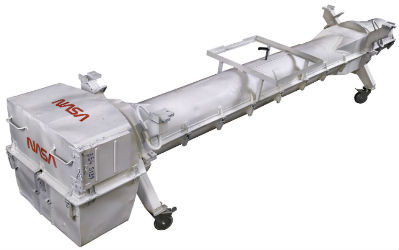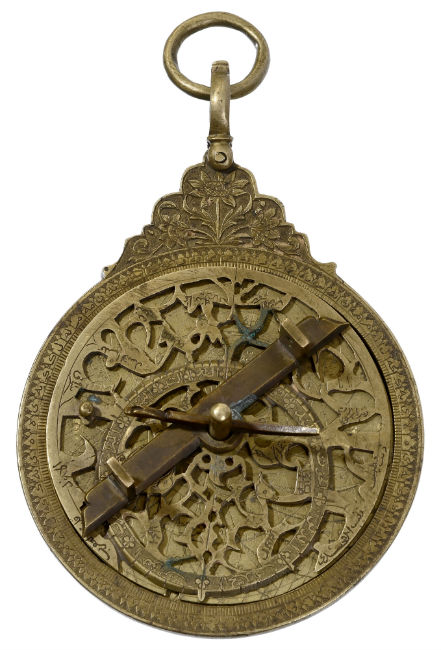
COLOGNE, Germany – Fine instruments of science and communication, industry and entertainment are among the highlights at Auction Team Breker on May 18. One of the earliest devices under the hammer is a scarce 18th century Islamic astrolabe bearing the engraved latitudes of thirty-eight cities, including Baghdad and Isfahan. Absentee and Internet live bidding is available through LiveAuctioneers.
The astrolabe (above) is an ancient instrument, a two-dimensional model of the sky, described by the 14th century English poet and philosopher Geoffrey Chaucer as “shaped in the manner of a net of a spider’s web … containing certain numbers of the fixed stars with their longitudes and latitudes.” Canadian entrepreneur Tom Wujec, a modern user of the device, pinpoints the astrolabe as the gadget of its day, the world’s first popular computer.
Other artifacts of timekeeping and navigation include a Nuremberg diptych sundial (below), arguably the earliest form of a pocket navigation system. The bone plates unfold to reveal a compass and a sundial decorated with leaves and flowers with the reassuring regulation of a medieval book of hours. Another fine piece is a replica 16th century brass nocturnal, a simpler dial than the astrolabe, for reading local time from the position of two or more stars in the night sky.
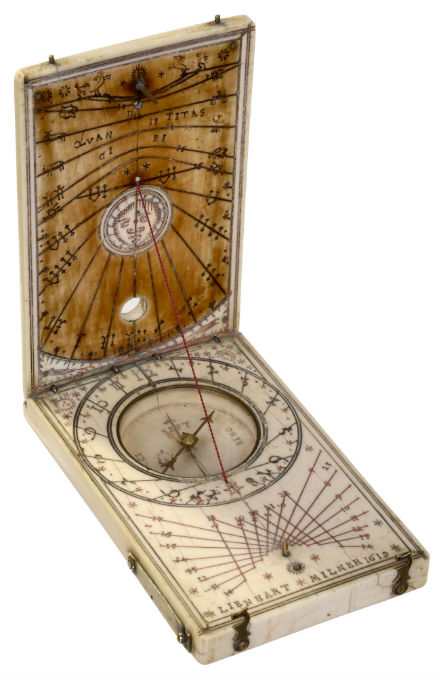
Two entries in the auction provide a unique insider’s view of exploration. The first is a 123-inch (3.16 meters) fiberglass and steel wind tunnel test model rocket, part of a joint project between NASA and the Central Institute of Aviation Motors in Moscow. The second is a survival from the realms of underwater exploration – a comprehensive diving outfit purchased by the vendor’s grandfather from Drägerwerk of Lübeck for diving expeditions in Chile during the 1940s.

Long before the advent of satellite navigation, astronomers and mariners used the sidereal timescale to locate celestial objects. The sidereal chronometer is, by necessity, a timekeeper of precision and finesse.
Not all fusee-spring instruments, however, served such a practical purpose. The intricate singing bird automata of the 19th century were built merely to beguile. From the tiny automated creatures with their moving heads, fluttering wings and tails, to the whistle and cams that create an illusion of birdsong, these were luxurious items in the high tradition of horological toys created for sultans and emperors.
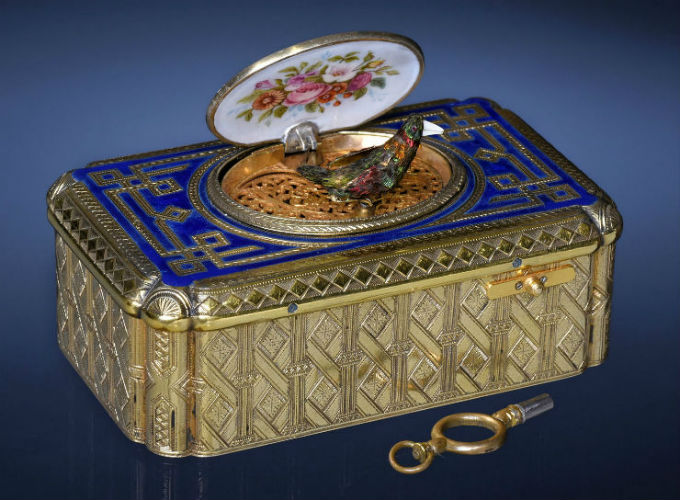
French firms, meanwhile, specialized in audio-visual entertainment with their deluxe mechanical musical toys that ranged thematically from trade and industry to the surreal. Although never intended as children’s playthings, automata were often inspired by childhood themes. The “Cuisinier” by Gustave Vichy is a good example of an automaton based on a nursery rhyme – the story of La Mère Michel and her unfortunate cat.
Another playful piece, by Louis Renou, depicts the surprising results of using the telephone. Modern technology was a favorite motif for this third-generation Parisian toy-maker with his curious sense of humor. Telephones, street thermometers and the latest in cameras and curling tongs are all at home in Renou’s mechanical universe. Are Renou’s automata a celebration or a critique of modern technology, or simply ingenious toys?
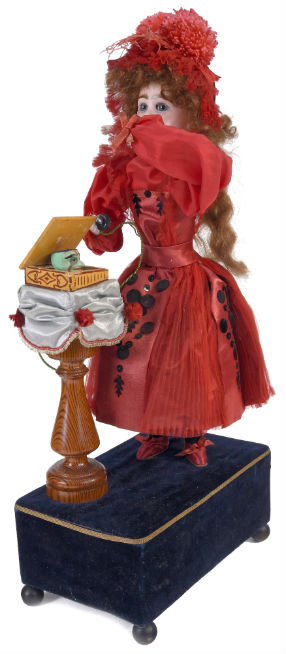
Breker’s auction has an excellent assortment of antique writing machines, including the coveted Malling-Hansen “Writing Ball” of 1867. The Rev. Rasmus Malling-Hansen, principal of the Royal Institute for the Deaf and Dumb, Copenhagen, designed the unique ergonomic typewriter to help his students to “speak with their fingers.”
Although Malling-Hansen is credited with the earliest writing machine in serial production, the Writing Ball had nothing of the roughness and awkwardness of a prototype. It anticipated the ease and refinements of typewriters on the market some 50 years later: automatic carriage return, an index for paragraphs and the space bar.
[av_button label=’View the fully illustrated catalog and bid on LiveAuctioneers.’ link=’manually,https://www.liveauctioneers.com/catalog/140486_150th-science-and-tech-mech-music-toys/’ link_target=’_blank’ size=’medium’ position=’center’ label_display=” icon_select=’no’ icon=’ue800′ font=’entypo-fontello’ color=’theme-color’ custom_bg=’#444444′ custom_font=’#ffffff’ av_uid=’av-962jfxk’ admin_preview_bg=”]


